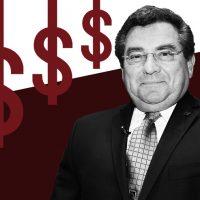New York City’s biggest multifamily lender said today that rent collections in its $31.6 billion multifamily portfolio have remained strong.
During New York Community Bank’s second quarter earnings call, executives reported that multifamily rent collections have been 85 to 90 percent of normal levels. The bank also reported a slight increase in net income, up 5 percent from the first quarter of 2020 to $105.3 million.
Read more


NYCB was one of the first lenders to craft a forbearance program for landlords — and it is offering a six-month deferral period. Other banks have opted for three-month deferral periods with the option to renew later.
Offering that much time for borrowers to restart full payments has benefited the bank’s balance sheet, said CEO Joseph Ficalora.
“We have a higher rate of interest on every dollar we defer,” said Ficalora. “When you take massive amounts of money that are being deferred at rates we could not get at the marketplace, it’s attractive to the bottom line.”
As of June 30, the bank had $3.7 billion in deferred multifamily loans. Most of those agreements will lapse at the end of the third quarter, he said.
The economic distress caused by the pandemic may also provide opportunities for NYCB’s borrowers to purchase multifamily properties in foreclosure, Ficalora said.
NYCB highlighted the performance of its rent-regulated assets, which accounts for $19 billion, or 60 percent, of the bank’s overall portfolio.
“Rent rolls are very stable in buildings where tenants have rent control or rent stabilization, because they want to maintain their apartment,” said Ficalora. “We have a very high concentration of tenants inclined to stay in the buildings they’re in because they have a huge economic advantage.”
The account differs from other banks, landlords and trade associations, which have reported that collections at rent-regulated properties were lower than those in market-rate apartments, which tend to have more affluent tenants.
The bank’s officials also reported that its multifamily property borrowers did not benefit from the federal Paycheck Protection Program because landlords were not eligible. In fact, many large multifamily property owners did receive such loans through affiliated entities and property management subsidiaries.
